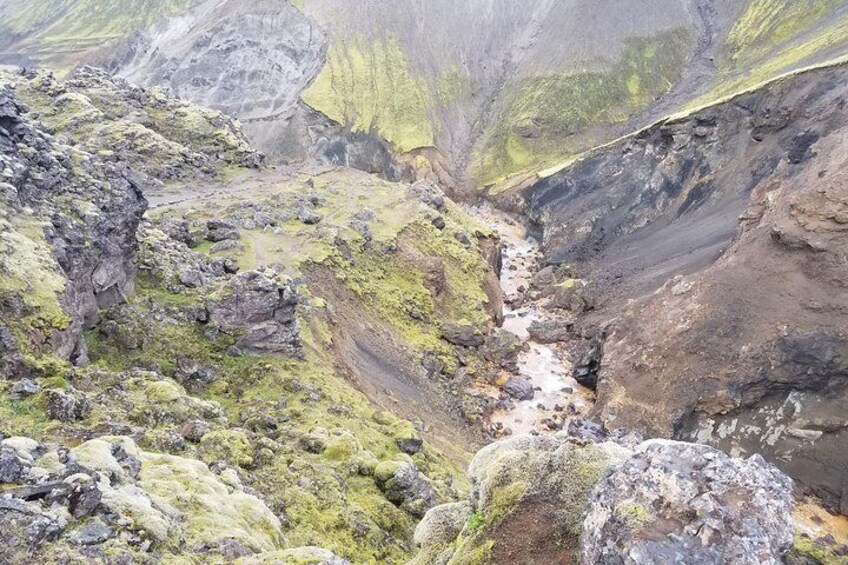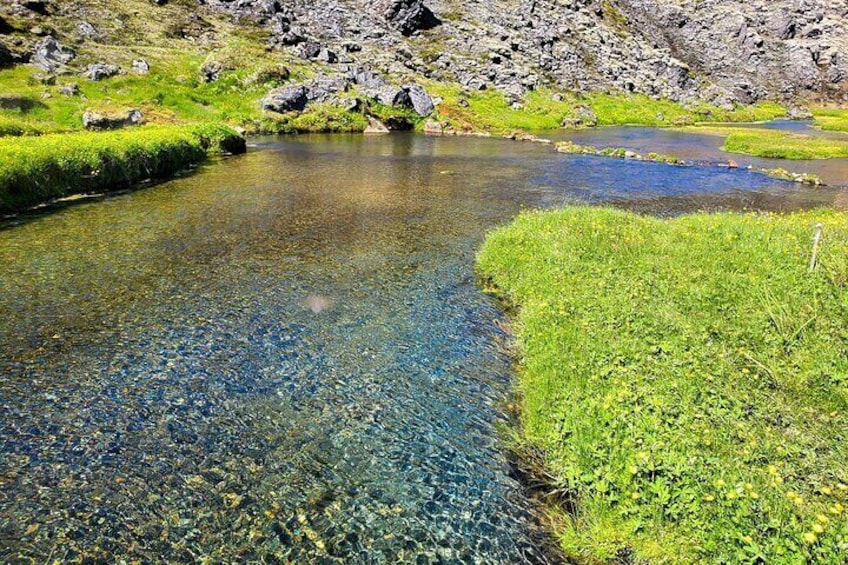Fjallabak Nature Reserve
- 5h
- Admission ticket included
Fjallabak nature reserve is nemed from the numerous wild and rugged rhyolite mountains with deeply incised valleys in Fjallabak. The topography of the Torfajökull, volcano found in the southern part of the Fjallabak Nature Reserve, a result of the region being the largest rhyolite area in Iceland and the second largest geothermal area, Torfajökul volcano is an active volcanic system, but is now in a declining fumarolic stage as exemplified by numerous fumaroles and hot springs. The hot pools at Landmannalaugar are one of many manifestations of geothermal activity in the area, which also tends to alter the minerals in the rocks, causing the beautiful colour variations from red and yellow to blue and green, a good example being the pink colour in Brennisteinsalda and the blue colour of Blánhúkur. Geologists believe that the Torfajökull volcano is a caldera, the rim being Háalda, Suđurnámur, Norđur Barmur, Torfajökull, Kaldaklofsfjöll and Ljósártungur.
The bedrock of the Fjallabak Nature Reserve dates back 8-10 million years. The volcano has been most productive during the last 2 million years, that is during the last Ice Age Interglacial rhyolite lava and sub-glacial rhyolites, examples being Bláhnúkur and Brennisteinsalda are characteristic formations in the area. To the north of the Torfajökull region sub-glacial volcanic activity produced the hyaloclastite (móberg) mountains, such as Lođmundur and Mógilshöfđar.
The most recent volcanic activity,s where at Veiđivötn fissure from 1480, Ljótipollur, Hnausapollur and other craters which extend 30 km, further to the north
The average temperature in the Fjallabak Nature Reserve is probably 0-1 °C. Temperatures between 5-14 °C may be expected in July and August, and in the winter the average temperature is about –6 °C. Mountain areas have a tendency to alter the general weather situation, and the Torfajökull Mountains are no exception. The most important local weather variations being; lowering of temperatures, increases in wind speed, local changes in wind direction, production of fog and mist, increased likelihood of rain and snow. As a rough guide, winds from the south to southeast rend to bring rain and bad weather whereas north to northeast winds usually bring cold but finer weather. Always be prepared for sudden and unexpected variations – they are frequent.
Because of the cold climate in the Nature Reserve the vegetation’s growing period is only about two moths every year and the formation of soil very slow. The soil is deficient in fully rotted and weathered minerals and is therefore rough and incoherent, furthermore wind and water transport is easily. Sandstorms, common in large parts of the area, as well as volcanic eruptions cover the Nature Reserve with lava and ash. If all these conditions are born in mind, together with the region being heavily grazed through the years it does not come as a surprise that vegetation is scarce in the Nature Reserve. Continuous vegetation cover is rather small and the largest and greenest vegetated areas are close to rivers and lakes in the Kýlingar area which is a continuous fenland with pools and ponds and various marsh plants. The acidic rhyolite bedrock is




